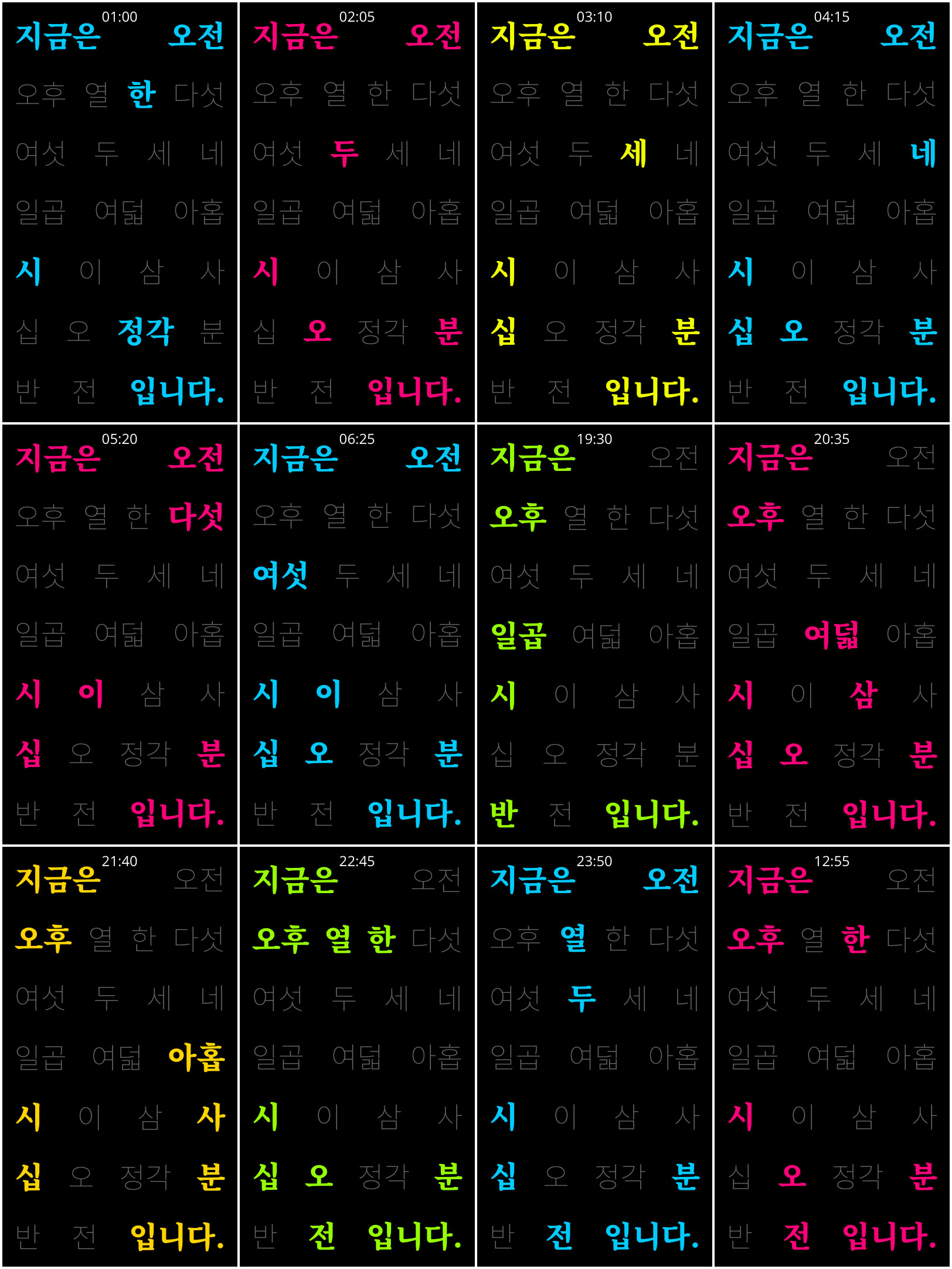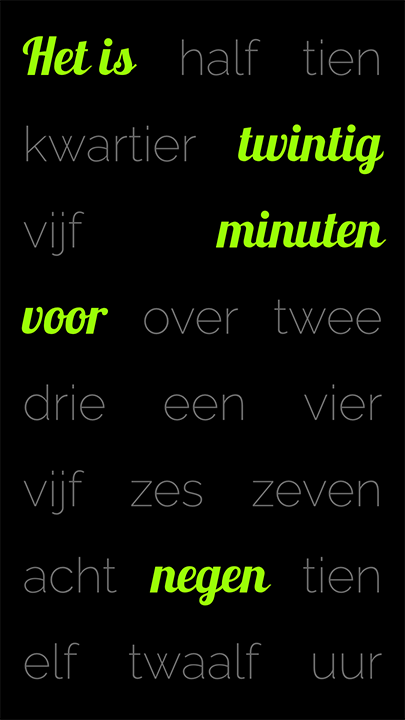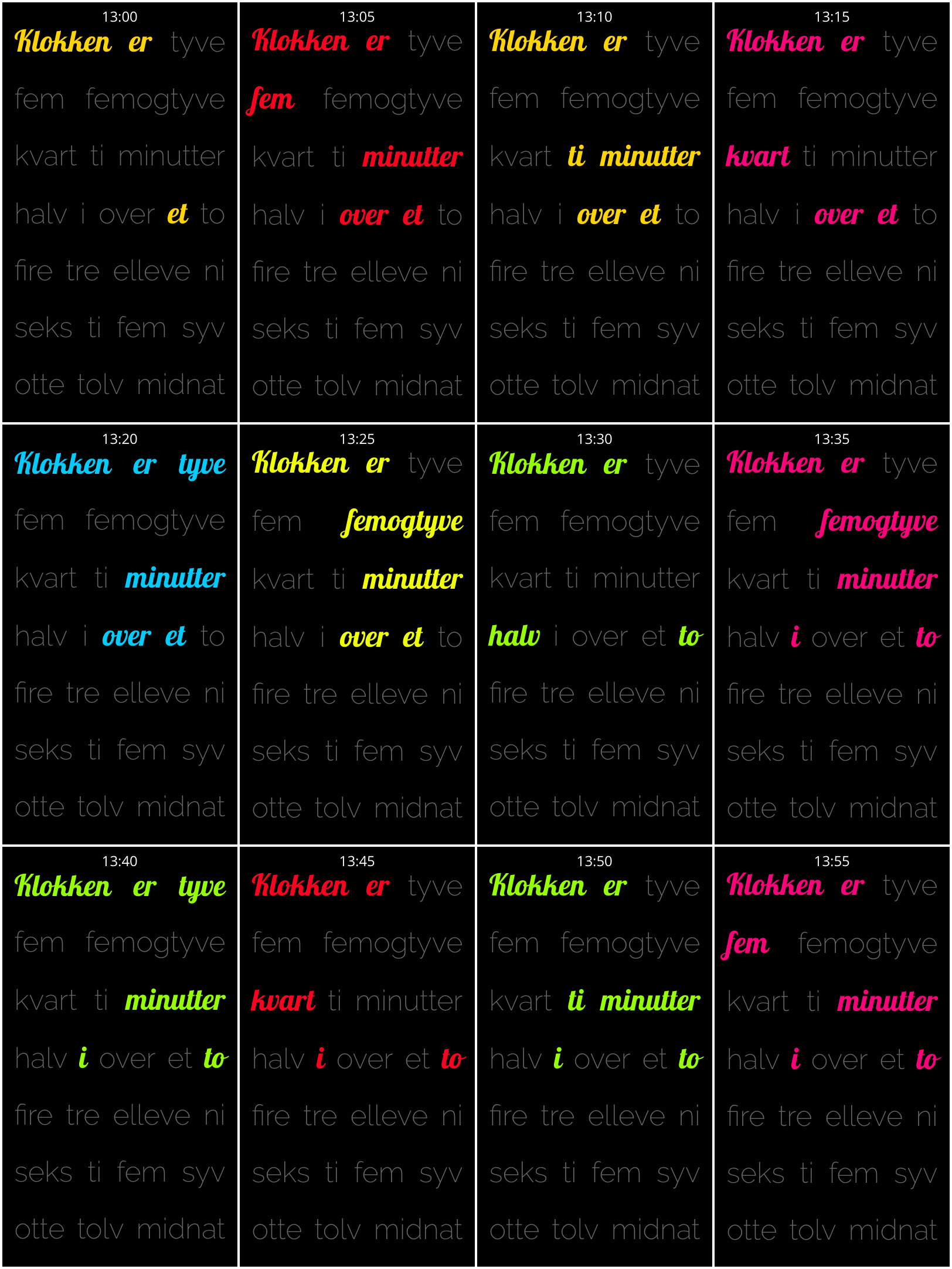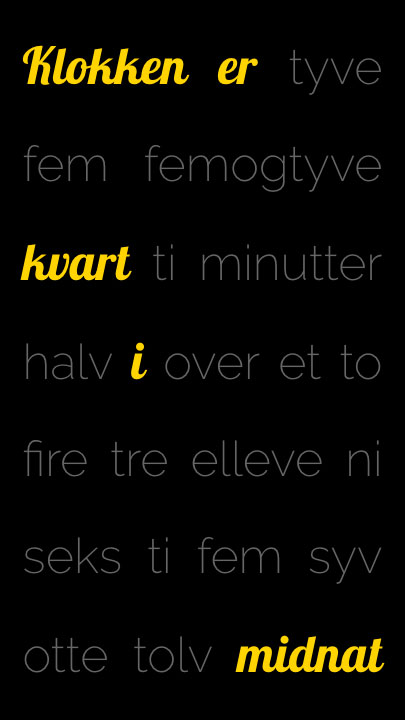Read the statement by Michael Teeuw here.
Help Translating Word Clock
-
-
@kruemel Thanks. I fixed this, and will be pushing an update shortly.
-
@Sean I’ve got the CJK fonts worked out. I have one question though: Should these be in vertical layout? Typically I’ve laid out the other languages in sequential rows from read left-to-right from the top row down, but it is possible to arrange these in sequential columns, read top-to-bottom from the left column to the right (or even read from right to left). Should that be the case for any of the CJK layouts?
-
@j.e.f.f said in Help Translating Word Clock:
@Sean I’ve got the CJK fonts worked out. I have one question though: Should these be in vertical layout? Typically I’ve laid out the other languages in sequential rows from read left-to-right from the top row down, but it is possible to arrange these in sequential columns, read top-to-bottom from the left column to the right (or even read from right to left). Should that be the case for any of the CJK layouts?
In Korea and China, People don’t use vertical layout anymore. Left-to-Right & Top-to-Bottom is enough.
In Japan, I think 50-50. Many books or magazines are written vertically (Top-to-Bottom & Right-to-Left). But the Horizontal layout is also used.(Left-to-Right & Top-to-Bottom) -
-
@Sean Ok Here is my attempt at the Japanese formal language clock, using vertical RTL layout. How did I do?
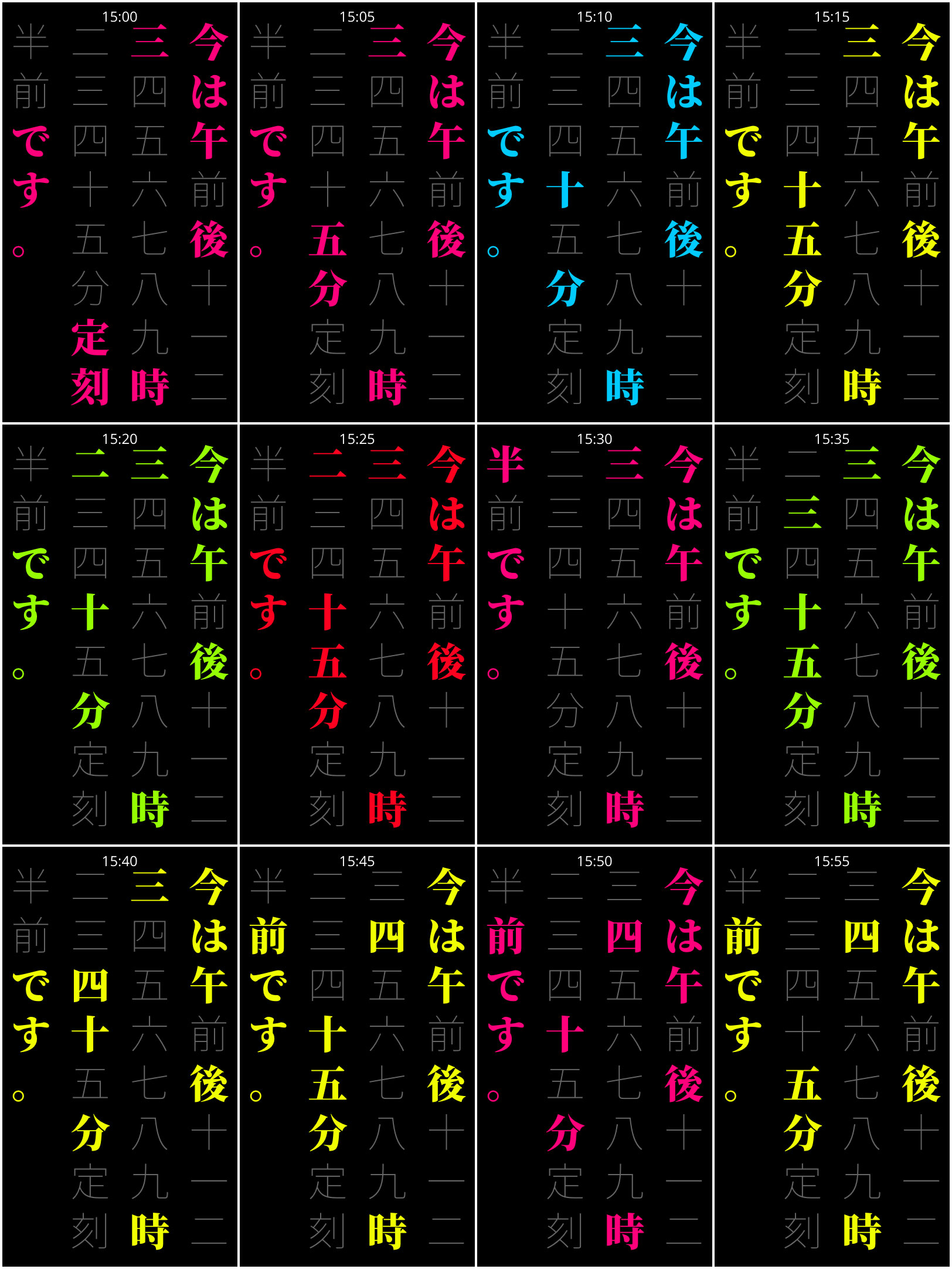
-
@j.e.f.f
Great!!
Only one, ‘午前’, ‘午後’ is a word unit which has meaning , so it’s better not to divide ‘午’ and ‘後’. (If you have enough space).
If you have still enough space, I can suggest you more natural form, but it needs some space. However current view is good enough. -
@Sean I can re-arrange this any way as necessary. So if you have a more natural translation, I’d like to include it.
-
@j.e.f.f Current view is enough, I think. :D
-
@j.e.f.f OK I made the one small change to the Japanese version. Here is the Korean layout:
